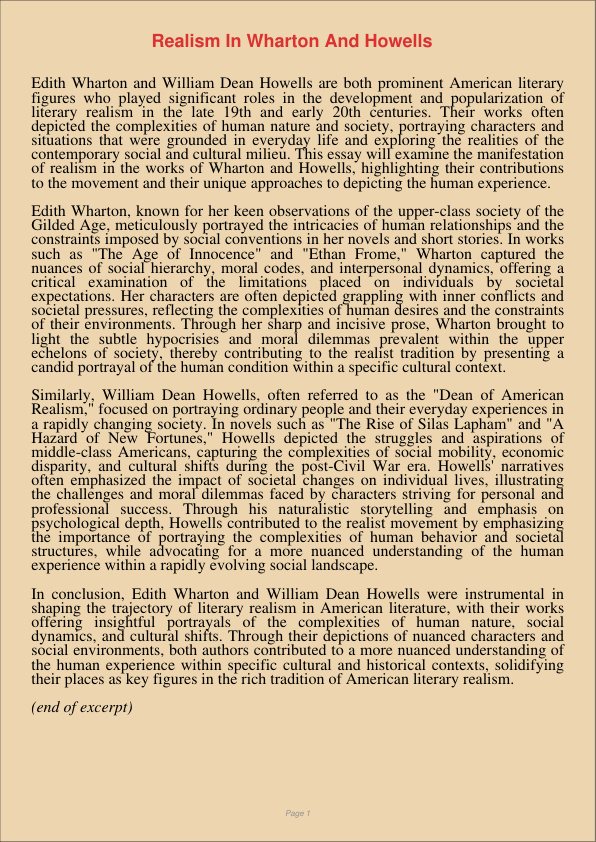Realism In Wharton And Howells
Dec 31, 2023
wharton
realism
Biology
Environmental Studies

Edith Wharton and William Dean Howells are both prominent American literary figures who played significant roles in the development and popularization of literary realism in the late 19th and early 20th centuries. Their works often depicted the complexities of human nature and society, portraying characters and situations that were grounded in everyday life and exploring the realities of the contemporary social and cultural milieu. This essay will examine the manifestation of realism in the works of Wharton and Howells, highlighting their contributions to the movement and their unique approaches to depicting the human experience.
Edith Wharton, known for her keen observations of the upper-class society of the Gilded Age, meticulously portrayed the intricacies of human relationships and the constraints imposed by social conventions in her novels and short stories. In works such as “The Age of Innocence” and “Ethan Frome,” Wharton captured the nuances of social hierarchy, moral codes, and interpersonal dynamics, offering a critical examination of the limitations placed on individuals by societal expectations. Her characters are often depicted grappling with inner conflicts and societal pressures, reflecting the complexities of human desires and the constraints of their environments. Through her sharp and incisive prose, Wharton brought to light the subtle hypocrisies and moral dilemmas prevalent within the upper echelons of society, thereby contributing to the realist tradition by presenting a candid portrayal of the human condition within a specific cultural context.
Similarly, William Dean Howells, often referred to as the “Dean of American Realism,” focused on portraying ordinary people and their everyday experiences in a rapidly changing society. In novels such as “The Rise of Silas Lapham” and “A Hazard of New Fortunes,” Howells depicted the struggles and aspirations of middle-class Americans, capturing the complexities of social mobility, economic disparity, and cultural shifts during the post-Civil War era. Howells’ narratives often emphasized the impact of societal changes on individual lives, illustrating the challenges and moral dilemmas faced by characters striving for personal and professional success. Through his naturalistic storytelling and emphasis on psychological depth, Howells contributed to the realist movement by emphasizing the importance of portraying the complexities of human behavior and societal structures, while advocating for a more nuanced understanding of the human experience within a rapidly evolving social landscape.
In conclusion, Edith Wharton and William Dean Howells were instrumental in shaping the trajectory of literary realism in American literature, with their works offering insightful portrayals of the complexities of human nature, social dynamics, and cultural shifts. Through their depictions of nuanced characters and social environments, both authors contributed to a more nuanced understanding of the human experience within specific cultural and historical contexts, solidifying their places as key figures in the rich tradition of American literary realism.